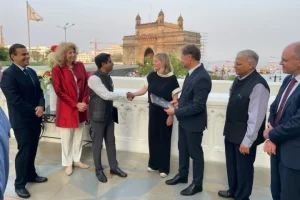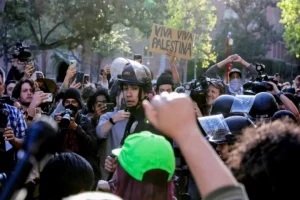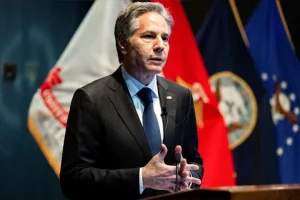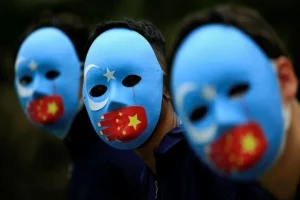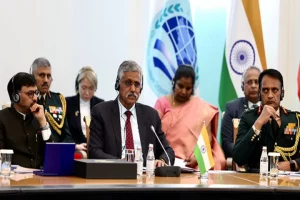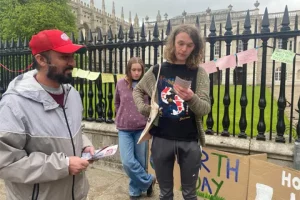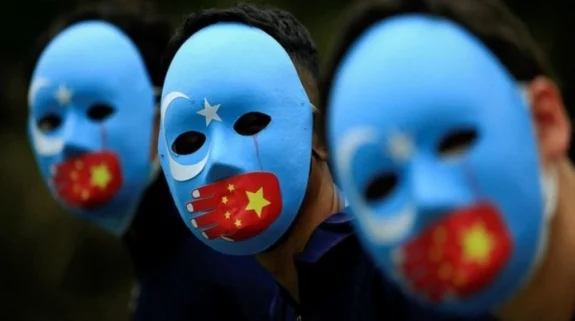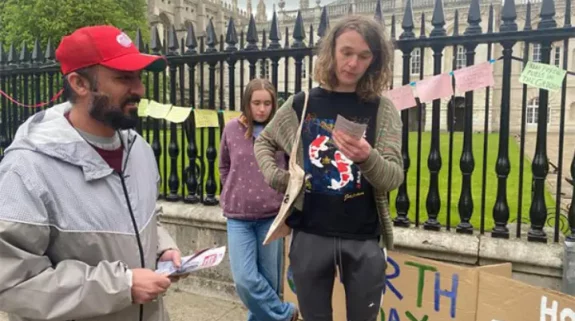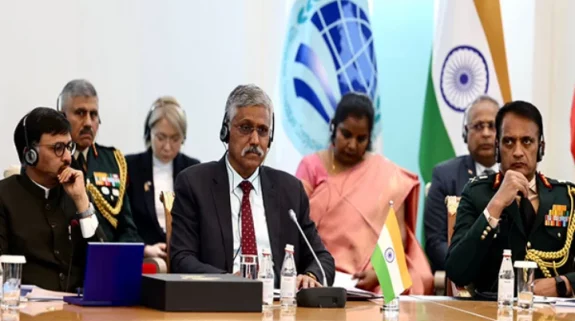The impressive turnout during the first phase of district elections in Kashmir on Saturday has jolted Pakistan, sections of the international media, entrenched politicians, and western human rights organisations, who sought to undermine the legitimacy of the abrogation of article 370 and 35A by the Modi administration more than a year ago.
The turnout was especially laudable in the Kashmir valley, the prime focus of the negative domestic and international campaign. The district of Budgam recorded 56.96 per cent participation, Kupwara 50.74 per cent, Ganderbal 48.62 per cent, Bandipora 43.57 per cent, Anantnag 43.32 per cent, Shopian 42.58 per cent, Kulgam 34.35 per cent, Srinagar 33.76 per cent and Baramulla 32.51 per cent. Only militancy-hit Pulwama recorded a paltry participation of 6.7 per cent.
Over the last 15 months an impression of disappointment, indifference, massive public resentment, defiance and suppression had been sustained mainly through international press and the social media. Even the tallest of the mainstream leaders claimed in their statements, tweets and interviews that the Kashmiris were feeling “disillusioned” with India over the unilateral interventions made through parliament and some presidential orders in August 2019 and thereafter.
Politicians, mediapersons and political analysts would compete in telling the world that Kashmir was under “perpetual lockdown” since August 5, 2019, the leaders were in jails and the calm on the streets was “highly deceptive”. Some of them relished calling it “the lull before the storm”. No less a leader than the tallest Farooq Abdullah said in a recent interview that there was calm because of “the soldiers on every nook and corner”.
<blockquote class="twitter-tweet">
<p dir="ltr" lang="en">"Voting is the expression of our commitment
to ourselves,
to one another,
to this country,
and to this world."
Begum Khanam Jaan, a 102 year old lady and Ravish Mir, a 92 year old man have voted in Keran.
They believe in democracy, nobody can deter them.<a href="https://twitter.com/hashtag/DDCElections?src=hash&ref_src=twsrc%5Etfw">#DDCElections</a> <a href="https://twitter.com/hashtag/Kashmir?src=hash&ref_src=twsrc%5Etfw">#Kashmir</a> <a href="https://t.co/BgyjN8mPaz">pic.twitter.com/BgyjN8mPaz</a></p>
— Chinar Corps? – Indian Army (@ChinarcorpsIA) <a href="https://twitter.com/ChinarcorpsIA/status/1332724435875364865?ref_src=twsrc%5Etfw">November 28, 2020</a></blockquote>
<script async src="https://platform.twitter.com/widgets.js" charset="utf-8"></script>
Contesting the DDC elections was arguably the wisest decision from the Valley-based amalgam, Peoples Alliance for Gupkar Declaration (PAGD). This was in contrast to the boycott to the Panchayati and the Urban Local Body (ULB) elections of October-December 2019 by Farooq Abdullah’s National Conference (NC) and Mehbooba Mufti’s Peoples Democratic Party (PDP).
Over 13,000 vacancies of Panches and Sarpanches in the Panchayati Raj Institutions besides 235 vacancies in ULBs, which remained blank in 2018, are also being filled up alongside the current DDC elections.
The traditional ruling parties like the NC and the PDP have already suffered the damage. The BJP and the Congress, that contested the 2018 elections, are holding just 9 and 17 seats respectively in the 74-member Srinagar Municipal Corporation. Over 50 of the elected councillors are independent or proxies of one or the other party.
It is because of this composition that despite being the ruling parties in the past, neither the NC nor the PDP — or any other PAGD constituent — was able to elect a mayor in Srinagar in the last two years. The incumbent mayor, elected on November 25, is a BJP-backed councillor who has now joined what the NC sarcastically calls ‘the king’s party’ — Altaf Bukhari’s Apni Party.
The writing on the wall was clear enough that the people in large numbers would participate in the elections and the PAGD’s boycott would have given all DDCs to the BJP and the Apni Party virtually on a platter. This would have been suicidal particularly for the NC and the PDP ahead of the first Assembly elections in the UT, expected in the middle of the next year. Now there’s a healthy contest.
<blockquote class="twitter-tweet">
<p dir="ltr" lang="en">“The ballot is stronger than the bullet.”
~ Abraham Lincoln <a href="https://twitter.com/hashtag/Kashmir?src=hash&ref_src=twsrc%5Etfw">#Kashmir</a> rejected Pakistan propagandas and diktats of it's stooges in Kashmir and came out to vote in large nos. in hope of development, progress & peace in Kashmir which thwarted earlier in name of Azaadi..<a href="https://twitter.com/hashtag/DDCPolls?src=hash&ref_src=twsrc%5Etfw">#DDCPolls</a> <a href="https://t.co/GWoNfGCmEQ">pic.twitter.com/GWoNfGCmEQ</a></p>
— Nighat Abbas (@nighat_abbas) <a href="https://twitter.com/nighat_abbas/status/1332579151836966913?ref_src=twsrc%5Etfw">November 28, 2020</a></blockquote>
<script async src="https://platform.twitter.com/widgets.js" charset="utf-8"></script>
The boycott, if done by the Kashmiris, would have been indeed embarrassing for New Delhi as it would have pulverised India’s moral standing on Kashmir in the international forums and possibly some pressure would have been mounted on the Narendra Modi government to withdraw the actions taken in August 2019 and thereafter. This would have given a new lease of life in Kashmir to Pakistan and the militants and the separatists controlled by Islamabad. But the PAGD’s own options were limited. It had landed between a rock and a hard place. It would have embarrassed the BJP government only at the expense of its own existence.
Even after participating in the current elections, the PAGD constituents would be facing tough times in all the DDCs comprising three tiers. In all these DDCs, the primary layer of the chairpersons of the Block Development Councils (BDCs) has been already occupied or dominated by the BJP and its friendlies. However, the PAGD parties could get an opportunity to tilt the balance in the Assembly elections as the MLAs would form the third tier of the DDCs.
The DDC elections are coming as a big turning point. Many of those who had called, supported or justified a boycott to all elections post-1990, are now asserting that the polling was “simply for development and the lanes and the drains”. Had it been so, why did the separatists and the militants boycott all Lok Sabha, Assembly, Panchayati and ULB elections with violence in the last 30 years? Why were hundreds of the mainstream political activists, contestants and participants in elections kidnapped and shot dead? If these elections are “for the lanes and drains alone”, why didn’t the people in the militant-infested Pulwama district come out in large numbers on Saturday?
Mass enthusiasm in defiance of the winter chill all across the valley on Saturday was the first evidence of a different ground reality. Centurion female voters to the first time electors were seen coming out and exercising their right to franchise without any fear or favour. There were no allegations of unfair means like bogus voting, booth capturing or coercion by the security forces.
52 percent turnout in the first phase, particularly the 41 percent in Kashmir, is an indication of a fairly good participation in the DDC elections. The gloom of the Mufti years, it seems, is finally over. In contrast to the high turnout Parliamentary and Assembly elections in 2014, all elections in 2015-18 recorded a very low participation..







